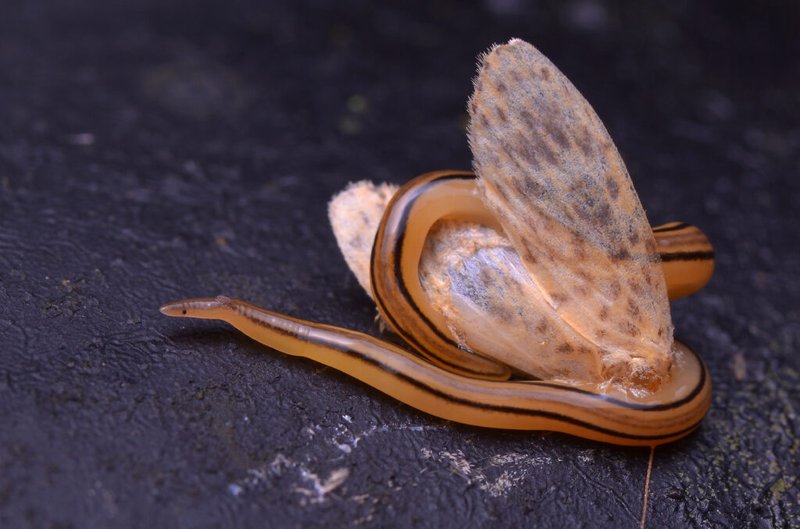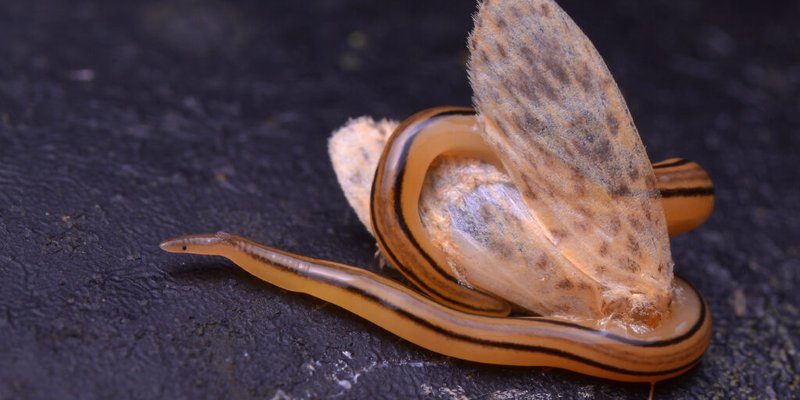
Now, think of ribbon worms like the little snacks of the ocean. They may not be the top-tier main course for larger predators, but that doesn’t mean they’re safe from hungry mouths. Various animals enjoy feasting on these long, squiggly creatures. Let’s dive into the world of ribbon worms and explore who’s hunting them down below the surface.
What Are Ribbon Worms?
Before we get into who preys on ribbon worms, it’s helpful to know what they actually are. Ribbon worms, also known as *Nemertea*, belong to a group of worms that are known for their long, slender bodies, sometimes stretching several feet in length! They usually live in marine environments, lurking in sand, mud, and under rocks. With vibrant colors ranging from pink to green, these worms can be quite a sight to behold.
What makes ribbon worms really unique is their way of hunting. They have an extendable proboscis that they can shoot out to snag their prey, which can include small fish and crustaceans. It’s almost like they have a built-in fishing line! This predatory behavior sets the stage for understanding their role in the ecosystem, but it also puts them in the sights of their own predators.
You might be wondering what happens when ribbon worms become the hunted rather than the hunters. The ocean is filled with creatures ready to add some variety to their diets, and ribbon worms are often on the menu!
Common Natural Predators of Ribbon Worms
When it comes to who eats ribbon worms, there’s quite a list! Let’s break down some of the most common predators.
Fish
Many fish species consider ribbon worms a tasty treat. For instance, *wrasses* and *flatfish* are known to hunt these worms. Fish have sharp eyesight and quick reflexes, making them effective hunters in the underwater world. They often scour the ocean floor, searching for wriggling movements that signal a potential meal.
Ribbon worms don’t just sit still, though. They tend to camouflage themselves, blending in with the sand or mud, trying to avoid becoming someone’s dinner. However, when they’re spotted, it’s not long before they’re gobbled up.
Crustaceans
It’s not just fish that have a taste for ribbon worms; many crustaceans do too! Crabs and certain types of lobsters are known to munch on these worms. Imagine a crab scuttling along the shore, its eyes scanning for movement, and then suddenly—snatch! The crab uses its powerful claws to grab the worm and enjoy a satisfying snack.
Interestingly, many crustaceans have their own techniques for hunting. Some can dig into the sand to uncover hidden ribbon worms, while others simply wait for an opportunity to pounce. This shows just how resourceful ocean predators can be.
Echinoderms
Echinoderms, like sea stars or sea cucumbers, are also part of the ribbon worm’s natural predator lineup. These fascinating creatures may not seem like the most intimidating hunters, but they have unique ways of feeding. For example, a sea star can extend its stomach out to envelop and digest its prey externally.
It’s an odd way to eat, but for sea stars, it works well! This means ribbon worms have to be extra cautious and aware of their surroundings. They certainly don’t want to be on the menu for a sea star!
How Do Ribbon Worms Protect Themselves?
With so many predators circling around, you might wonder how ribbon worms manage to survive in the wild. They’ve developed some clever survival strategies.
Camouflage
The first line of defense for ribbon worms is their ability to blend in with their surroundings. Their coloration and texture allow them to hide among sand and seaweed, making it harder for predators to spot them. For example, a bright pink ribbon worm nestled in a patch of brown seaweed can easily go unnoticed.
Speed and Agility
Ribbon worms are also surprisingly quick! When threatened, they can dart away and use their length to escape quickly. This swift movement can sometimes mean the difference between life and death. It’s almost like a game of tag, where the ribbon worm must stay one step ahead of its pursuers.
The Role of Ribbon Worms in the Ecosystem
Understanding who preys on ribbon worms is important, but it’s also crucial to appreciate the role they play in the ecosystem. As predators themselves, they help keep populations of smaller marine life in check. In turn, they provide food for various larger animals, forming a vital part of the ocean food chain.
Energy Transfer
When ribbon worms are consumed, energy moves up the food chain. This energy transfer is essential for maintaining the balance of marine ecosystems. Without ribbon worms, the fish and crustaceans that rely on them may struggle to find adequate food, which could disrupt the entire underwater community.
Environmental Indicators
Ribbon worms are also great indicators of environmental health. Because they are sensitive to changes in water conditions, the presence or absence of ribbon worms can reveal a lot about the ecosystem’s state. Healthy populations suggest a thriving marine environment, while declining numbers may signal potential issues, like pollution.
In the grand tapestry of ocean life, ribbon worms play a unique role as both predators and prey. With a variety of predators ranging from fish to crustaceans and echinoderms, these creatures are part of a delicate balance that keeps marine ecosystems running smoothly. Understanding their natural enemies gives us a better picture of their place in the world and the importance of preserving these fascinating organisms.
So, the next time you find yourself near the water, keep an eye out for ribbon worms. You might just see a little drama unfold right in front of you, highlighting the wonders of nature and the intricate connections that bind us all in the underwater realm.

